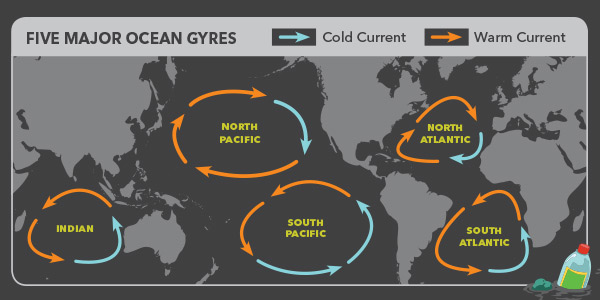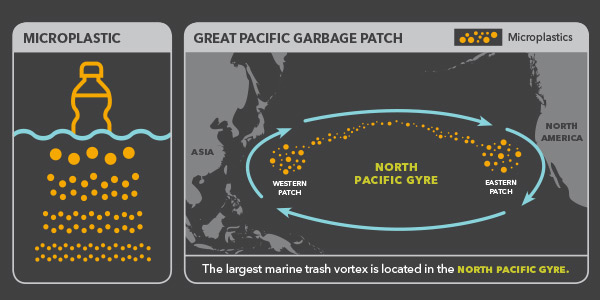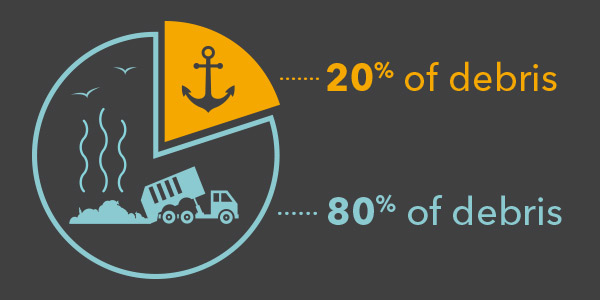Gyre Garbage

(Updated August 2021)
A Gyre is a large system of circular ocean currents formed by global wind patterns and the forces created by Earth’s rotation.1
These systems help circulate our ocean waters around the globe.
The 5 major ocean gyres are the: Northern Atlantic, Southern Atlantic, North Pacific, South Pacific, and Indian.

These natural phenomena act similar to whirlpools, pulling in debris towards their center. This includes natural debris as well as plastics.

Scientists estimate that 8 MILLION METRIC TONS of plastic trash enters the sea from land each year – the equivalent of 5 plastic bags filled with trash for every foot of coastline around the world.2

At this rate, the World Economic Forum suggests by 2050, there will be more plastic in the oceans than fish, by weight.3
Our minds may picture a marine "grabage patch" as a floating island of trash. In reality, they consist primarily of tiny pieces of plastic called microplastics; much of which is invisible to the human eye.

20% of debris in the Great Pacific Garbage Patch comes from boaters, offshore oil rigs, and large cargo ships that dump or lose debris overboard.
80% of debris in the Great Pacific Garbage Patch comes from land-based activities in North America and Asia.4

Solutions in Sight
In 2017, the NOAA Marine Debris Program removed 1,600 metric tons of debris from waterways and educated over 18,300 students about marine pollution.5
What Can You Do?
Other non-profits are also committed to a world without plastic pollution and are combating it at the source. Find out ways you can take action...

>> www.marinedebris.noaa.gov
>> www.5gyres.org
Sources:
1 National Geographic Encyclopedia, Ocean Gyre
2 Jenna R. Jambeck, et. al, SCIENCE Vol. 347, Issue 6223
3 World Economic Forum, The New Plastics Economy, Rethinking the Future of Plastics
4 National Geographic Encyclopedia, Great Pacific Garbage Patch, Pacific Trash Vortex
5 NOAA, 2017 Marine Debris Program Accomplishments Report
>> Download full copy of Mission: Water Magazine
>> Plactics Debris Wreaks Havoc in the Pacific Ocean